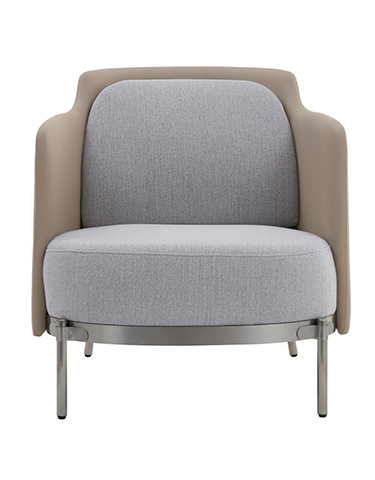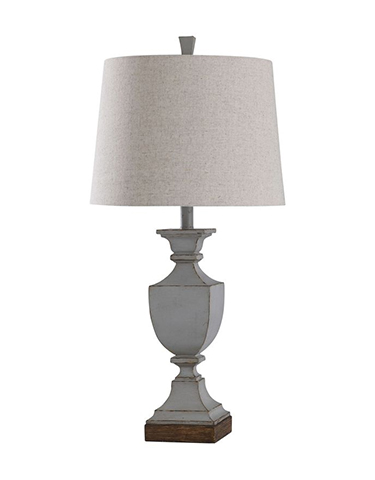"Smart Living Technology in Furniture 2025"

Smart Homes and How They Become a Tangible Reality
The transformation of smart homes into a tangible reality has been happening gradually due to the advancement of internet technologies and smart devices. Initially, this type of home was limited to using specific devices like smart lighting or advanced audio systems. However, over time, many other smart systems have been integrated, such as temperature control, surveillance cameras, security systems, and even household appliances like refrigerators and washing machines.
Today, any home can be turned into a smart home by adding smart devices and equipment tailored to the specific needs of each household. For example, smart lights can be installed, controlled via voice commands or smartphone apps, or smart security systems can be set up to send alerts whenever suspicious activity occurs. With continuous development, even an ordinary home can now transform into an intelligent environment that enhances comfort and security in the lives of its residents.
Artificial Intelligence (AI) and the Internet of Things (IoT):
Artificial Intelligence (AI) enhances the performance of smart devices by learning user behavior and offering personalized solutions. For example, AI can analyze energy consumption patterns and adjust household appliances like air conditioning and lighting based on actual needs, helping to save energy.
The Internet of Things (IoT) enables smart devices to communicate with each other over the internet. This connectivity makes homes more interactive and intelligent. For instance, smart air conditioners can adjust the temperature based on data from motion sensors that detect whether people are present in a room. This kind of device integration increases energy efficiency and provides greater comfort for users.
Voice Assistants:
Amazon’s Alexa and Google Assistant are the most popular voice assistants globally, allowing users to control household devices with voice commands. For example, users can ask to play music, adjust lighting, or even turn off the air conditioner with just a simple phrase.
These voice assistants are more than just control tools—they also offer integrated experiences like adding events to calendars, getting news updates, or ordering food. Their popularity is rapidly growing as they can be integrated into all kinds of household devices, from lighting to appliances.
Home Automation:
Home automation systems allow for more integrated home management. Using smartphone apps or AI systems, users can automatically adjust lighting, air conditioning, and even curtains based on the time of day or activities happening at home.
For example, when waking up in the morning, the system can open the curtains, start the coffee machine, and adjust lighting to the optimal settings for a comfortable start to the day. These systems require smart devices connected to the internet and may include technologies like Zigbee or Z-Wave for device connectivity.
Smart Security:
Smart surveillance cameras use AI to analyze video and detect movement, enhancing security with greater precision. If any suspicious activity is detected, an instant notification can be sent to the user’s smartphone.
Digital locks offer greater flexibility in controlling home access. Instead of traditional keys, doors can be unlocked using fingerprints, smart cards, or even smartphone apps.
Smart doorbells like Ring allow users to interact with visitors without opening the door. They feature video cameras with facial recognition capabilities to identify people. Users can respond to visitors via their phones or grant access remotely.
Sustainable Homes:
Solar energy has become an integral part of smart homes, with solar panels integrated with smart devices to monitor and manage energy consumption. These smart systems can determine the optimal times for solar energy generation and storage for later use.
Smart recycling systems help sort waste automatically or even provide analytics on the types of waste being disposed of at home, simplifying recycling processes and reducing environmental impact.
Energy-efficient appliances like refrigerators, washing machines, and air conditioners are designed for high energy efficiency, helping to reduce the household’s carbon footprint.
Smart Furniture:
Wireless Charging Tables: Smart furniture offers multiple functions beyond aesthetic appeal. Wireless charging tables are an example of this. These tables are equipped with wireless charging technology, allowing users to charge their smartphones or other devices like headphones or smartwatches while using them, without the hassle of wires.
Mirrors with Interactive Screens: Smart mirrors provide more than just a reflective surface. Some modern mirrors have integrated screens that display information such as weather, news, or even show pictures and videos. They may also include sensors to measure humidity and allow you to adjust the lighting according to your needs.
Sustainable Materials:
Recycled Wood: In smart homes, there is a growing interest in using recycled wood as an eco-friendly option. This material is not only more sustainable but also durable and aesthetically pleasing. It is used to make home furniture such as tables, chairs, and even shelves, helping reduce waste and protect the environment.
Smart Glass: Smart glass is a recent innovation in smart home design. This glass can switch from transparent to opaque (dark) with the press of a button or when it senses sunlight. It is used in windows and glass facades of homes to reduce excess heat or increase privacy without the need for curtains.
Bacteria-Resistant Fabrics: In home furniture like sofas and chairs, bacteria-resistant fabrics are used to improve comfort and maintain cleanliness. These fabrics prevent the growth of bacteria and mold, making them ideal for furniture exposed to constant use and sweat.
Smart Devices:
Fridges that Shop for You: One of the recent innovations in home appliances is smart fridges that can connect to the internet and analyze the food inventory inside them. These fridges can inform you of what food you have, and when necessary, they can send a notification to purchase missing items or even order them directly online.
AI-powered Ovens: Smart ovens are equipped with AI technologies that allow them to automatically adjust temperatures and cook food perfectly according to the selected recipe. Some ovens can even track the cooking progress through built-in cameras and send cooking notifications.
Foldable or Hidden TVs: The design of foldable TVs is a new step in the world of smart furniture. These TVs can hide inside walls or furniture when not in use, helping save space and maintain aesthetics and cleanliness in the home. The TV can automatically appear when you want to watch it, enhancing the integration of technology into small and modern spaces.
The Importance of Smart Technology in Enhancing Home Life
Smart homes have seen significant development in recent years, but the future holds even more innovations that will make homes more advanced and efficient. As technology continues to progress, smart homes will evolve into even more integrated environments, enhancing comfort, security, and sustainability. Here are some trends that will shape the future of smart homes:
Self-Managing Homes:
In the future, homes will become more capable of self-learning and adapting to the needs of their residents. Using artificial intelligence (AI), homes will be able to monitor user behaviors and adjust conditions accordingly. For example, the home might learn your wake-up and sleep hours, adjusting lighting, temperature, or even preparing coffee automatically.
Adaptive technology will allow homes to change their interior designs based on daily activities. For example, rooms could transform from workspaces into relaxation spaces using smart, adaptable furniture.
More Integration with the Internet of Things (IoT):
In the future, we will see even more connectivity between devices via the internet. Devices in the home will function as an interconnected network, allowing them to interact more quickly and efficiently. For instance, devices could recognize your personal preferences and adjust accordingly through continuous monitoring.
Wearable devices like smartwatches or smart glasses will interact directly with home systems, making it easier to control the home from anywhere at any time.
Advanced Security:
The focus on smart security will grow to include face recognition technology and AI that analyzes the behavior of people within the home. Security systems will predict suspicious patterns and issue real-time alerts.
Smart devices will also assist in preventing household disasters, such as fires or gas leaks. You will have smart systems capable of detecting gas leaks or potential fires early and automatically shutting down systems to protect you.
Sustainable and Smart Homes:
With increasing environmental awareness, smart homes will integrate more sustainable technologies. Solar energy will be more widely incorporated, and smart systems will connect to solar panels to adjust energy consumption based on weather conditions and household needs.
We will see more energy-saving devices that help reduce waste. Additionally, there will be smart systems for water management, allowing you to track water usage in the home and improve its efficiency.
Social Interaction and Well-being:
In the future, smart homes may become more socially interactive, with AI devices helping organize family meetings and social activities based on everyone’s preferences.
Health and well-being will become an essential part of smart homes. Health monitoring systems will be integrated into the home environment, where devices can monitor family members' health, such as measuring blood pressure or blood oxygen levels, and analyze data to improve overall well-being.
Homes with Augmented Reality (AR) and Virtual Reality (VR) Technology:
Augmented reality (AR) and virtual reality (VR) will become part of smart home experiences. This technology will allow you to design and enhance home spaces interactively. You could experience how new furniture or wall colors will look in your home before making a decision.
In the future, the concept of “virtual rooms” might also emerge, where individuals can interact with their surroundings in a 3D environment, whether for work or entertainment.
Increased Focus on Privacy and Data Protection:
As the use of connected devices in smart homes grows, it will be crucial to enhance privacy and data protection. Companies will develop better solutions to ensure the protection of personal information collected by smart devices.
New technologies like advanced data encryption and biometric fingerprint technology may emerge to ensure that users' personal data remains secure.
In Conclusion:
The future holds unlimited possibilities for smart homes, focusing on improving comfort, security, sustainability, and well-being. Technologies like artificial intelligence and the Internet of Things will continue to integrate our daily lives with devices in ways never before possible, making our homes smarter and more interconnected. With these innovations, we will have homes that are not just places to live, but interactive and comfortable environments that perfectly align with our needs.



